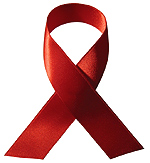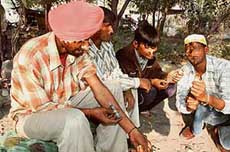
Today is World AIDS Day and this year's message is "STOP AIDS. KEEP THE PROMISE." The news is full of articles about HIV and AIDS in the spirit of World AIDS Day. Here are some of particular notice:
The International Herald Tribune reports on a collaboration between the Clinton Foundation and two Indian drug companies. The result? Anti-retrovirals designed for children will be provided for an average price of 16 cents a day, or $60 a year, which is about 45 percent lower than the lowest current price. The news report also states that the prices will be available to 62 developing countries and will lead to the treatment of an additional 100,000 people in 2007. Jon Liden, a spokesman for the Global Fund to Fight AIDS, Tuberculosis and Malaria, based in Geneva, said the deal announced Thursday would allow grants already made by the foundation to treat substantially more people in 2007. "It's a hugely positive step," he said, "because one of the really difficult areas in rolling out treatment has been to have a steady and huge supply of pediatric dosages and packaging."
The BBC had a very interesting piece on how HIV affects the global workforce. The article states that the virus has had a crippling effect on the workforce of many countries. Without this, it estimates that the cumulative loss to the global workforce from the virus could rise 45 million by 2010 and almost double again by 2020. The ILO said increased access to ARV treatments could significantly reduce the impact on the global workforce. "The prospect of averting between one-fifth and one-quarter of potential new losses to the labour force should serve as a powerful incentive to target the workplace as a major entry point to achieve universal access to ARVs," the report concluded.

